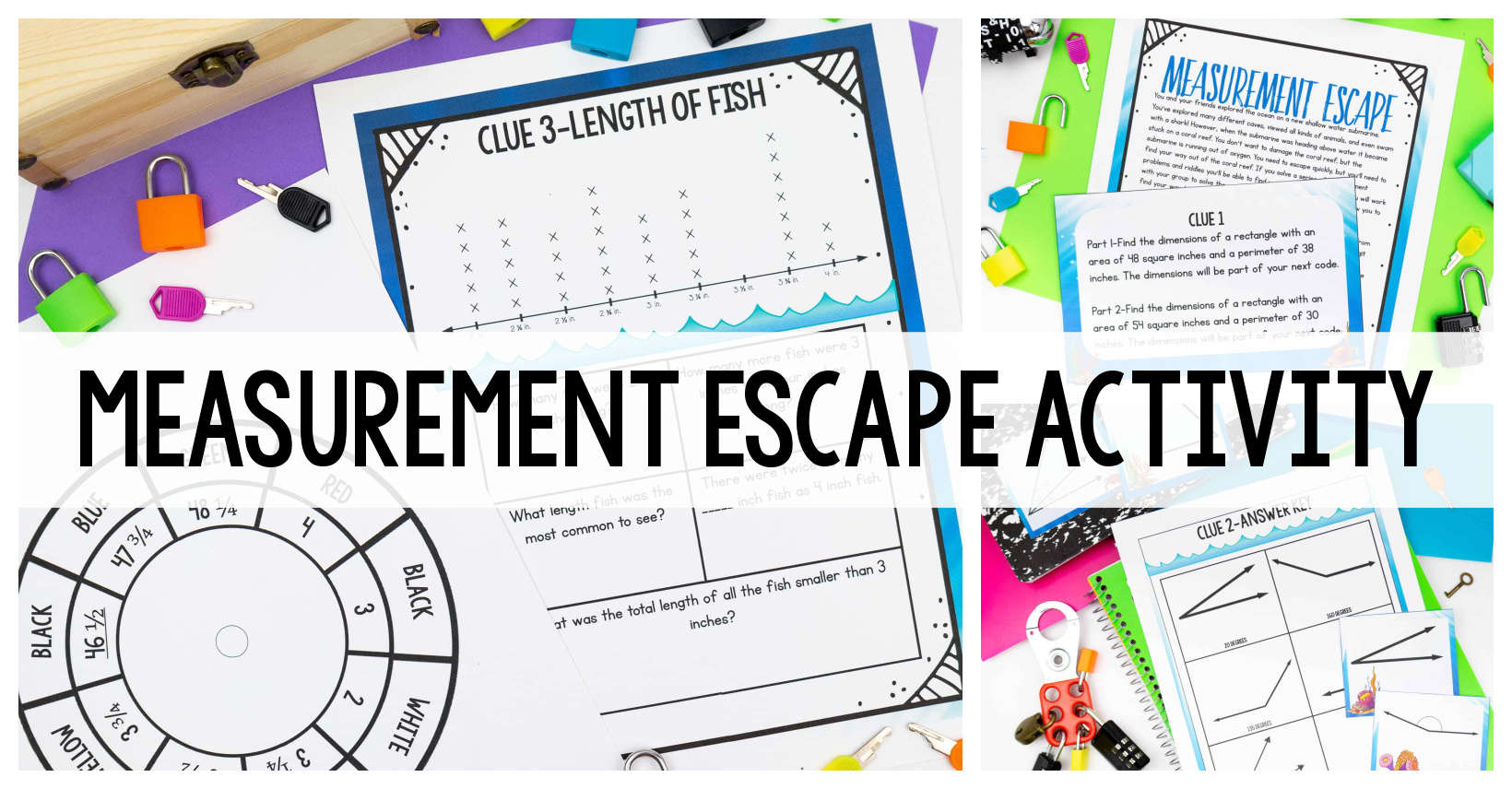
This measurement escape is a culminating activity for the fourth grade measurement standards. In the activity, students must work together to escape from a coral reef. To escape, students must unlock a series of locks to find their way out of the reef.
There are multiple versions of this activity to meet your classroom needs. One version is for a physical set-up of the activity, and the second version is for a digital version of the activity that does not require boxes or locks. Instead, students will enter their codes on their computer or device through Google Forms.

Clue 1
In clue 1, students find the dimensions of two rectangles. For example, one rectangle has an area of 48 square inches and a perimeter of 38 inches. This definitely requires problem solving and strategic thinking. The dimensions from the rectangle provide the code to the 4-digit lock.
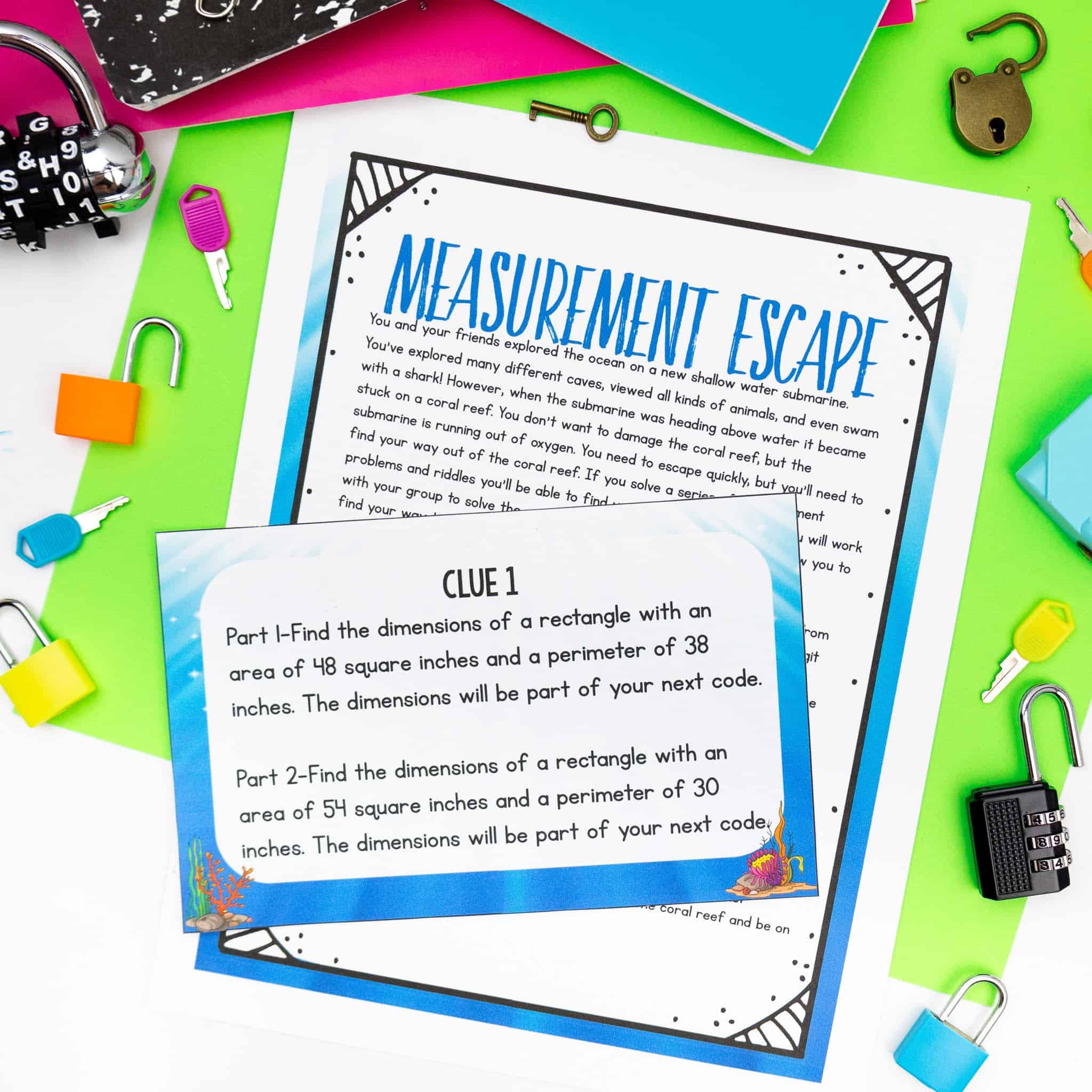
Clue 2
In the second clue, students find the measure of 5 angles. In four of the angles, students will need to use a protractor to find the measure of the angle. One one of the angles, students will use their understanding of angles are additive to find the measurement. Once students find the measurements, they add the degrees of each of the angles together, and the sum is the code for the 3-digit lock. This will lead them further away from the reef.
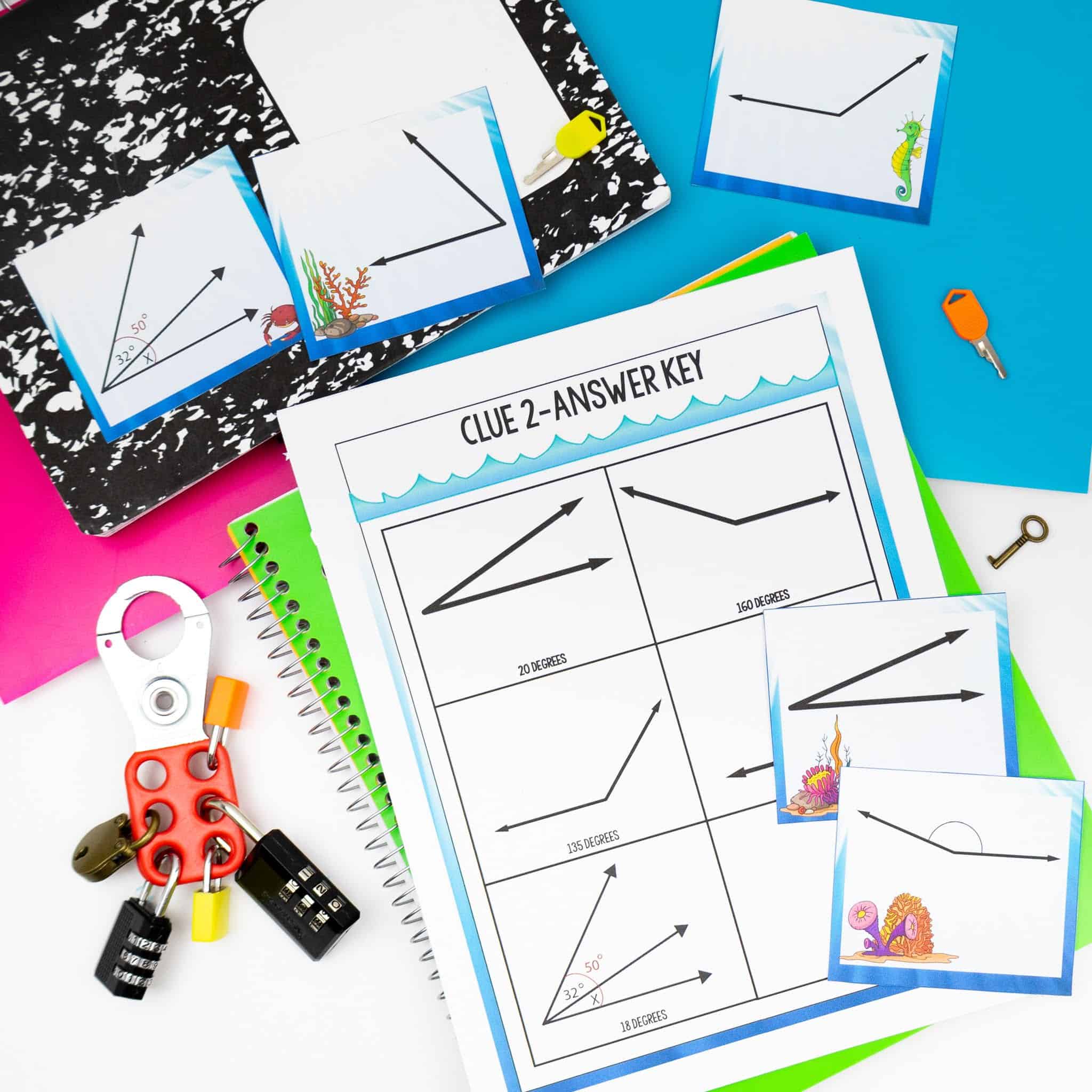
Measurement Escape – Clue 3
In the next clue, students answer questions using a line plot describing the length of fish. After determining the answers, students use the decoder wheel to determine the colors for the 5-color lock. If you’re using the physical version, this will open the large box for access to the small box.
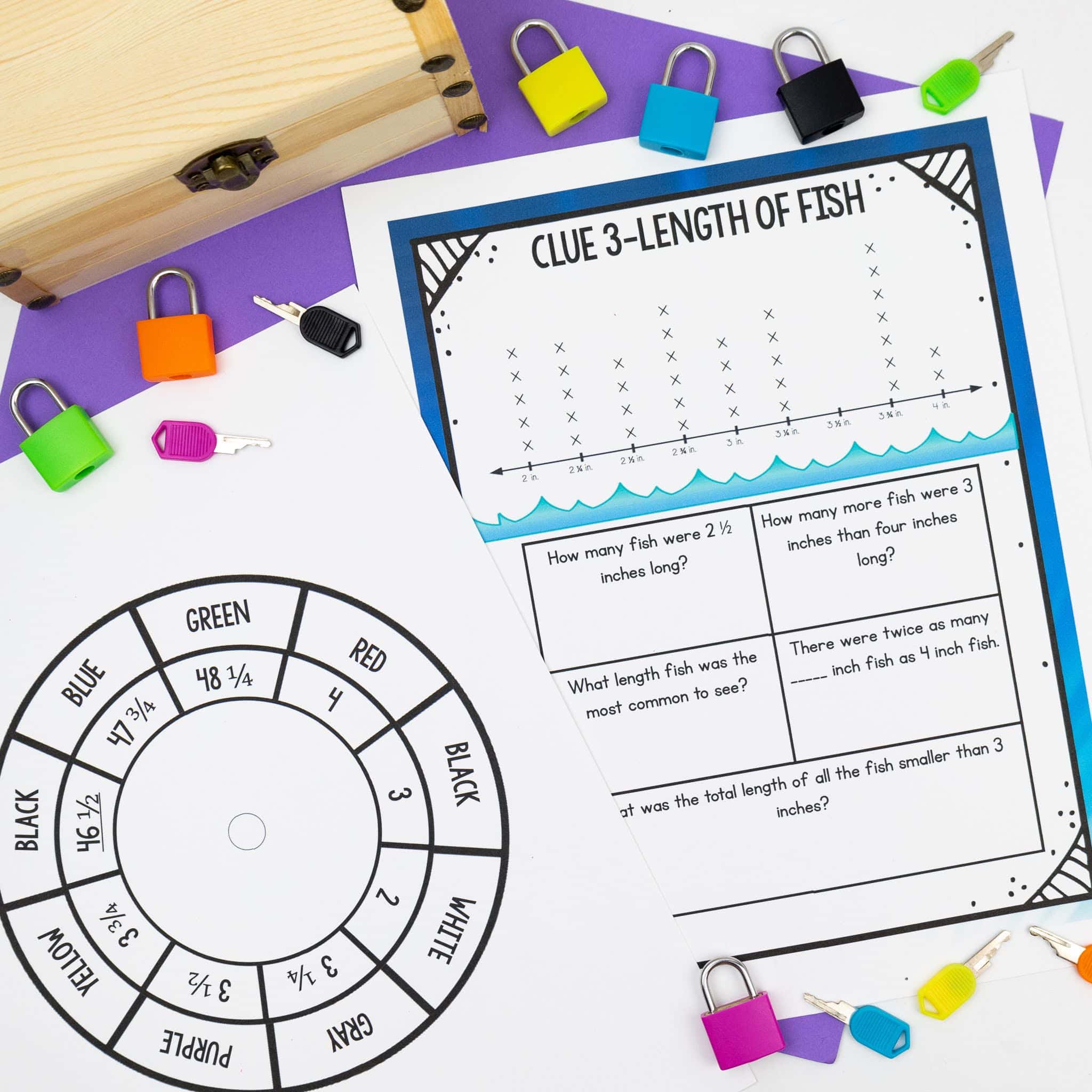
Measurement Escape – Clue 4
In the last clue, students solve measurement conversions. At the bottom of clue 4, there is a code that can only be solved by using the correct conversions. The message says, “Solve the whale maze.” The whale maze gives students the code to the final lock.
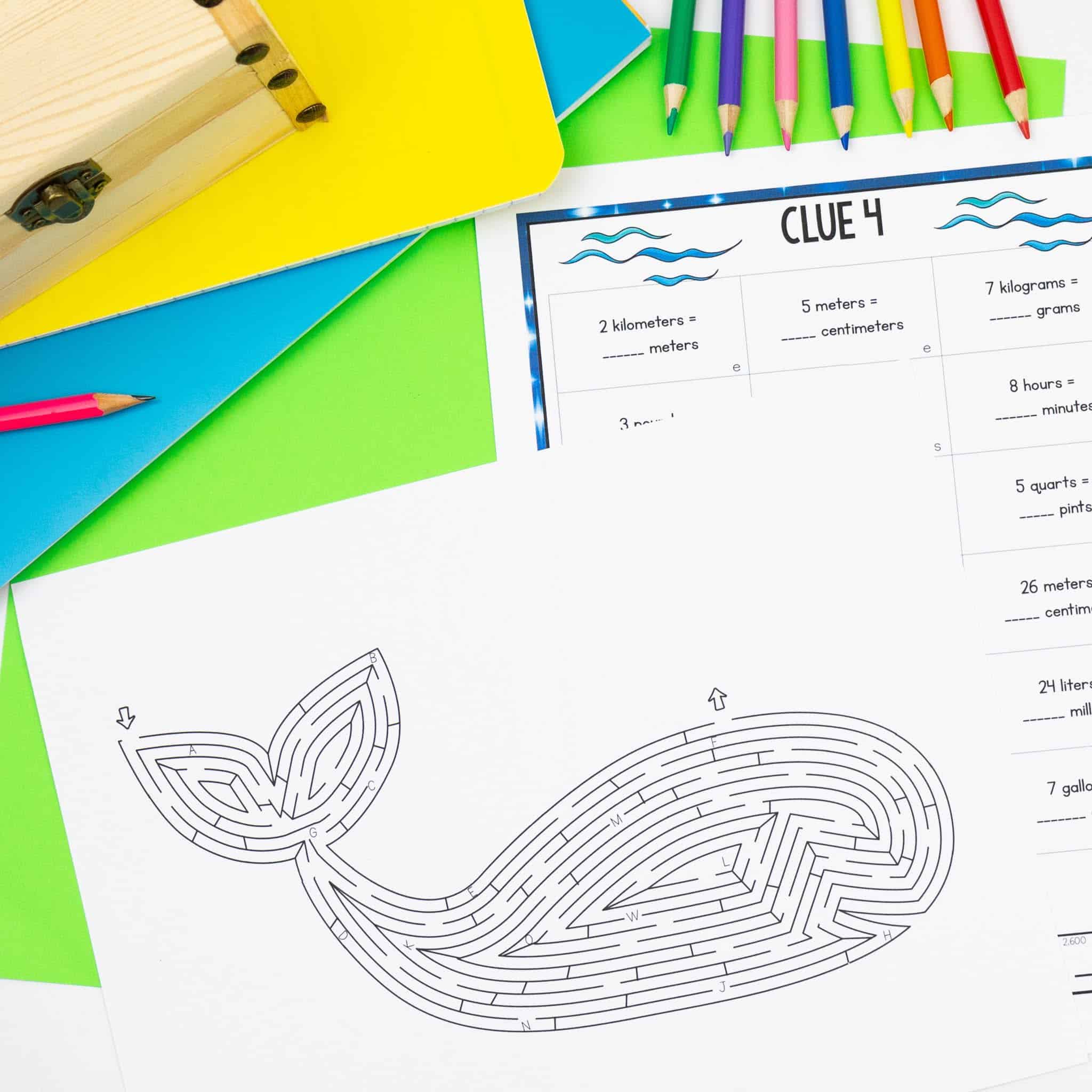
This measurement escape is such a great way to end your measurement unit. If you’re new to using escape room activities and would like a little more information, be sure to check out this post. You can find this unit here.


